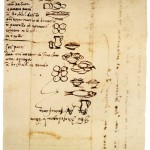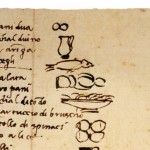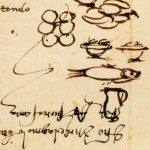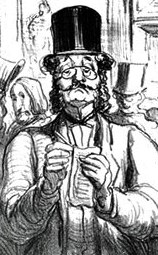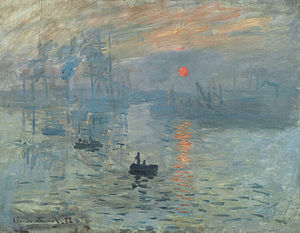- Michelangelo’s Grocery List, 1518 [via Biblioklept.org]
- Grocery List, detail.
- Grocery List, detail.
- Grocery List, detail
One of the myths about Michelangelo is that he was a loner who worked without assistants –even on the huge Sistine Ceiling commission. Here’s a wonderful item from Michelangelo’s everyday life that disproves the myth — a grocery list he handed to an assistant who couldn’t read.
In fact, as William Wallace reveals in his 1999 biography, Michelangelo had a team of trusted and well-paid Tuscans (he didn’t trust Romans), who worked with him most of his career and were among his closest friends. Some lived with him in his home in Rome. His life story is more like Michelangelo and his Eleven Dwarfs, than Michelangelo the Lonely Genius.
“Almost half of his workforce had some sort of pet name: the Stick, the Basket, the Little Liar, the Dolt, Oddball, Fats, Thorny, Knobby, Lefty, Stumpy, and Gloomy,’’ Wallace writes. “Because he was his own bookkeeper, Michelangelo recorded their names, number of days worked, and the wage of every employee every week. Having grown up in the stoneworking town of Settignano, Michelangelo was personally acquainted with most of his assistants; he was familiar with their talents and employed their fathers, cousins, and neighbors. Such familiarity was a form of quality control and provided an unusual degree of labor stability.”
[Thanks for the grocery list to Beth Wilson.]

